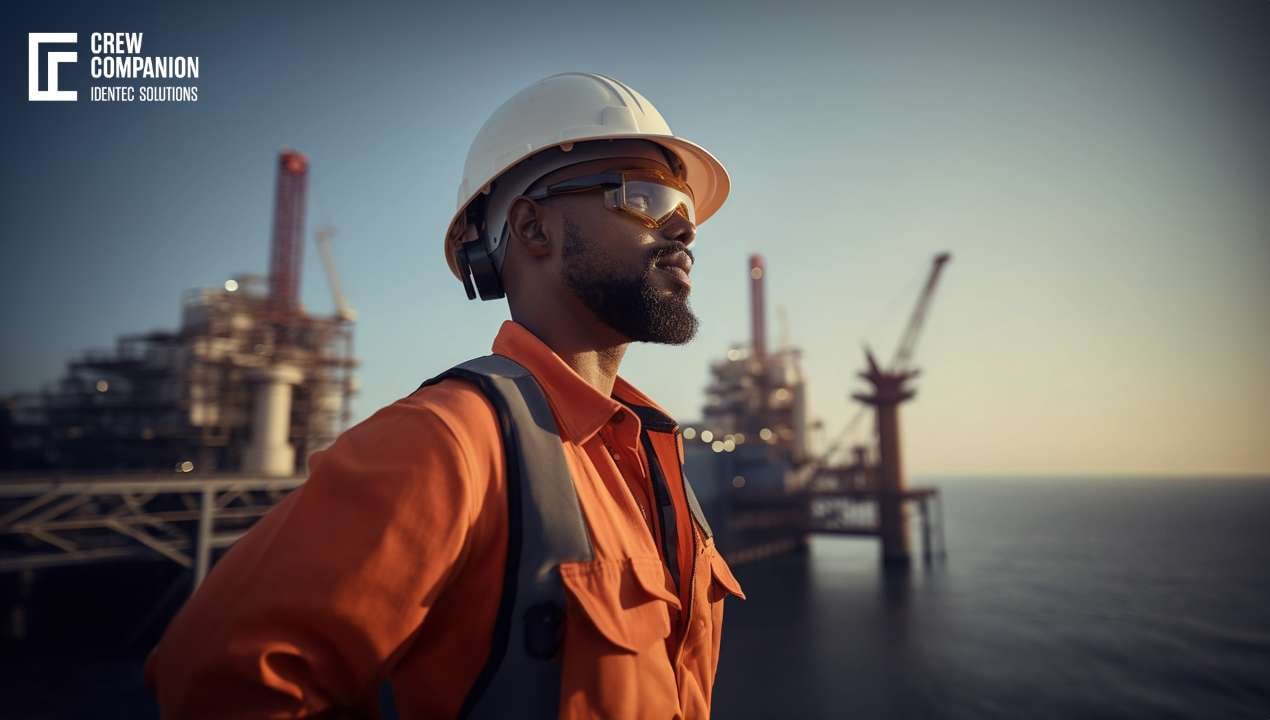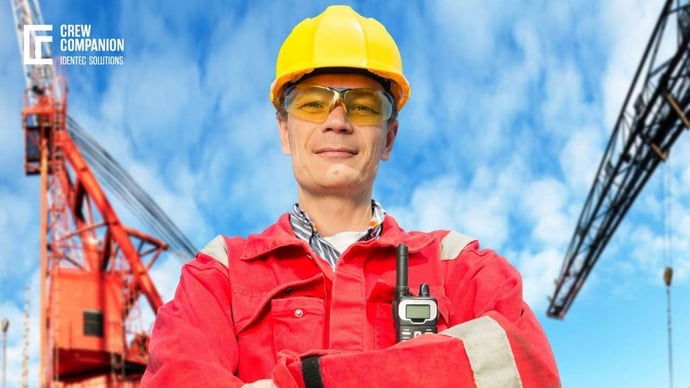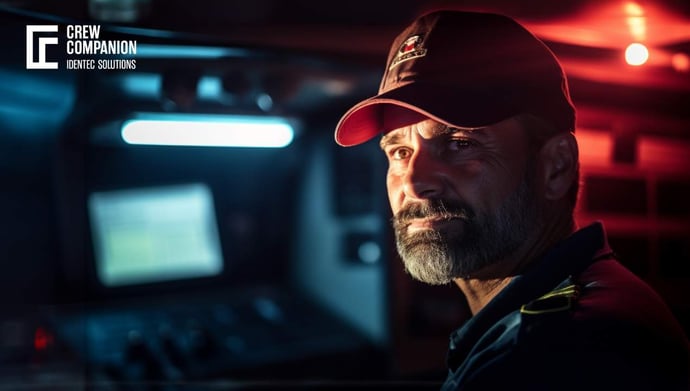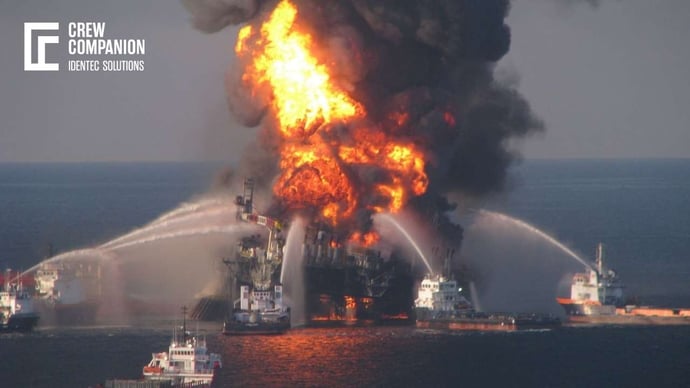How to do a proper EHS Risk Assessment
| Written by Michal Wozniakowski-Zehenter

No video selected
Select a video type in the sidebar.
Different kind of threats
The offshore environment presents a unique set of challenges and risks, making the process of risk assessment distinct from onshore operations. Offshore facilities often face severe weather, including hurricanes. Well-engineered structures might not stand up to these natural forces, pointing out the importance of effective safety plans and emergency procedures (read more about emergency mustering). On remote sites, the management of emergencies is a challenge, which shows that good communication tools and trained response teams are required offshore.
These facilities might be unlawfully accessed through their information systems because they are used more nowadays. To protect against them, security checks and watching closely around the clock are needed, along with strong cybersecurity actions.
Extreme conditions at sea can also lead to broken-down equipment, which shows frequent checking and repair, tough construction materials are critical for preventing disruption and safety hazards. Bringing workers back and forth can be risky, especially in rough weather, calling for well-thought-out travel plans. Workers arriving late can lead to unsafe conditions and slow work.
Environmental care is really important because the Earth can be badly harmed by accidents like oil spills. Saving nature while working offshore is essential, so there should be a plan for this. Following the rules set to take care of the Earth should be given a lot of priority.
EHS Risk Assessment by the book
There are international regulations for all offshore industries that make sure the environment is protected, health is taken care of, and procedures are followed. The International Maritime Organization (IMO) sets a lot of these standards, like conventions and guidelines. It's important to keep global best practices and keep operations safe, so international standards are necessary. In addition, local and national regulations must be followed. Most countries and regions have laws about safety, the environment, and emergency response. For companies to avoid penalties and run legally, they need to stay on top of all the rules. Additionally, industry associations and professional bodies develop guidelines. You can follow their guidelines to run safe and greener operations.
A key aspect of offshore operations is regulatory compliance management. A company's safety and environmental standards can be verified by certifications from recognized authorities. It involves constantly updating policies and procedures. It also means training staff and doing regular audits. Keeping operational practices in compliance with regulatory requirements and industry standards is the goal of regular audits, both internal and external. If you don't follow regulations, you could get shut down. Keeping up with the latest regulations is key. Non-compliant companies can get into accidents and environmental disasters, resulting in legal liability and damage to their reputation. To make sure your staff is up to date with regulatory changes and how they affect their roles, monitor legal developments and train them regularly. By collaborating with regulators, taking part in industry forums, and contributing to new regulations, companies can stay on top of regulatory changes and help shape industry standards.
How do you Prepare for an EHS Risk Assessment?
Forming a team of experienced, diverse people is key to an offshore EHS risk assessment. They should know how to manage safety, protect the environment, manage occupational health, and handle emergencies. It's best to involve team members from different departments, which leads to a more holistic risk assessment - Input from these stakeholders is crucial because they give managers insight into the practical aspects of offshore operations and potential risks they might not know about.
To conduct the assessment, you need to gather relevant documentation. This could be previous risk assessment reports, accident and incident records, maintenance logs, and operational procedures. By analysing this historical data, you can identify recurring problems and areas that need special attention during the current assessment. It's also important to define clear objectives and scope. Establishing these parameters will help focus the assessment efforts and make the process manageable and effective.
Make sure the right people are trained. During this training, you'll learn about the tools and methodologies you'll use during the assessment, as well as risk management principles and offshore challenges. The plan should outline the methodology, tools, and resources required for the assessment, the timeline, and the roles and responsibilities of everyone involved. Organizing the process ensures it's systematic, thorough, and aligned with your safety and environmental goals.
EHS RISK ASSESSMENT: WHAT RISKS ARE WE TALKING?
Identify all risks associated with offshore operations. That includes equipment, operating procedures, the environment, and people. This comprehensive approach ensures no potential risks are overlooked by doing site inspections, reviewing incident reports, interviewing employees, and analysing process flows. The first step is identifying hazards and classifying them based on their nature and potential impact. The classification includes physical hazards like equipment malfunctions, chemical hazards like spills, biological hazards, ergonomic hazards, and psychological stressors. To do a risk analysis or mitigation strategy, you need to know what kind of hazards you've got. You should document them meticulously and prioritize them by severity, likelihood, and number of affected people. It helps focus on risk management.
The next step is to analyse the risks associated with different hazards. It involves looking at the risk of a hazard happening and the severity of its consequences. Qualitative, quantitative, and semiquantitative methods are used depending on the hazard and the available data. Risk matrixes are commonly used to visualize the level of risk. They let you figure out which ones are acceptable and which ones need to be addressed. For more complex hazards, you might need advanced modelling tools like fault tree analysis or bow-tie diagrams to understand the different factors at play.
It's also important to assess the cumulative risk posed by multiple hazards occurring simultaneously or in sequence in offshore environments. In the risk analysis phase, it's really important to involve stakeholders, particularly those who are directly involved in offshore operations. This helps us understand the broader risk landscape and plan comprehensive risk mitigation strategies. Their first-hand experience and knowledge will help you figure out how to deal with risks. With this dynamic approach to risk assessment, risk assessments stay relevant and effective over time.

Hazard Control in EHS Risk Assessment
Once hazards are identified and evaluated, it's crucial to develop and implement customized control measures to address these hazards. It involves following the hierarchy of controls, where elimination, substitution, engineering, administrative controls, and personal protective equipment (PPE) are prioritized. In these strategies, hazards are reduced or eliminated. Engineered controls might be used to change equipment or processes. Administrative controls might be revised work procedures or training (see also: Emergency Response Drill) might be offered to minimize hazards. In offshore operations where hazards can be severe, detailed emergency response and readiness strategies are crucial. There should be emergency procedures, evacuation procedures, and effective communication methods in these strategies. You should train employees on new safety protocols and how to use safety gear. Their feedback on how these controls are working can help you improve them.
You have to keep track of control measures after they're set. Hazard management can be improved with frequent inspections, audits, and evaluations of safety procedures and emergency strategies. To keep up with changes in operations, technology, regulations, and external factors, hazard assessments should be flexible, consistently reviewed, and updated. As a result, the hazard management strategies stay relevant and effective.
Routine audits and inspections are important to check safety standards and hazard control measures. Internal audits are done by the organization, while external audits are done by regulatory bodies. Set up feedback channels to get feedback about hazard control measures from employees, management, and other stakeholders. By incorporating these inputs into their hazard management practices, organizations can constantly improve and adjust them.
EHS Risk Assessment: Train your awareness
Offshore industries rely on training to manage risks and make sure people are safe. Employees get the skills and knowledge they need to handle their work challenges through tailored programs. In addition to safety principles, operational procedures, emergency response techniques, and environmental protection measures, these programs don't end with them. To stay on top of the latest technologies and regulations, staff members need to get ongoing education. Employees need to be aware of these industries as they evolve, so they know how to adapt. It's critical to promote safety and environmental awareness as core values within the offshore industry. It's possible to do this with regular meetings, drills, campaigns, and dissemination of info. These values get ingrained in the culture of the industry, so employees prioritize safety and the environment more.
A lot of training programs have improved with technology in the last few years. With advanced simulation tools and virtual reality, employees can practice realistic scenarios that mimic offshore challenges. By taking this hands-on approach, you'll be able to retain knowledge and develop practical skills. Regular assessments and employee feedback are crucial for continuous improvement. Identifying areas for improvement and making necessary adjustments can be done by evaluating how effective training programs are and getting input from those who go through them. By creating this feedback loop, the industry improves and learns, which helps improve safety and risk management.
Continuous Improvement in EHS Risk Assessment
Continuous improvement in an offshore industry will underpin an effective EHS risk assessment. It is a concept based on the principle that risk management is not a one-time job but a series of successive acts which adapt to continuously changing conditions. The nature of operations on these sites is dynamic, as it involves continuous changes in weather conditions, continuous improvement in technology, and continuously altered regulatory requirements. It, therefore, becomes a process for organizations to revisit regularly and readdress the risk assessment practices that would involve updating all identifications of new hazards, updating control measures, and also making sure that all safety protocols are current. This iterative process adapts to new challenges in the form of an emerging cyber threat or a new environmental regulation that might affect operations. Continuous improvement in a company will result in open communication at all organisational levels to build better safety with continuous feedback. Regular debriefings, incident reviews, and lessons-learned sessions may expose certain gaps in current practice and bring about strategies that work even better.
Further, integrating technological tools such as predictive analytics and AI will aid in identifying trends and events that could pose a risk and thus provide an opportunity for mitigative action. Continuous improvement built into the EHS framework will serve not only to maintain compliance but also to enhance overall safety performance, reduce the likelihood of incidents, and foster a resilient safety culture. It demonstrates a commitment not only to the protection of the workforce but also to the environment in pursuit of operational excellence in a generally hard-to-predict offshore sector.
FAQS
What is risk assessment in EHS?
An Environmental, Health, and Safety (EHS) risk assessment is an inclusive method that discerns and appraises possible risks within an organization's activities. It facilitates a pre-emptive approach in applying control strategies to protect employees and the environment from potential dangers. This continual procedure aids in ranking risks and adjusting safety protocols as needed, illustrating a dedication to health, safety, and risk reduction. Instead of reacting to incidents, it's crucial to actively evaluate and lessen risks in advance (learn more about offshore incidents and wind parks).
What are the hazards offshore?
In the offshore oil and gas industry, workers may face musculoskeletal disorders from manual tasks and ergonomic challenges. Exposure to hazardous substances like chemicals and solvents is also a concern. Physical hazards include high noise levels, vibration, asbestos, and exposure to naturally occurring radioactive materials. Comprehensive strategies are necessary to address these hazards, including training, offshore safety equipment (like PPC), health monitoring, and safety protocols. Regular EHS risk assessments and updates to safety measures are crucial to protect worker health.
Takeaway
There's no substitute for diligence, expertise, and a commitment to safety and environmental stewardship when it comes to conducting HSE/EHS risk assessments in offshore industries. The key steps are to understand offshore risks, put together a team, and involve stakeholders. Identifying hazards, analysing risks, and implementing control measures are key. Regular audits and inspections reinforce the process as well. With continuous education and engagement, training, and awareness are key to fostering a safety culture. Safety-first culture is essential to ensuring compliance protecting the workforce, the environment, and reputation, as the risk assessment process is ongoing and dynamic. Offshore industries achieve operational excellence by embedding these principles.
Delve deeper into one of our core topics: Emergency Response Management
Glossary
EHS (Environmental, Health, and Safety) risk assessment in offshore refers to the systematic process of identifying, evaluating, and mitigating risks associated with offshore oil, gas, and wind energy operations. It ensures the protection of workers, the environment, and assets by assessing hazards related to equipment, weather conditions, chemical exposure, and emergency scenarios. The process includes hazard identification, risk analysis, and the implementation of control measures to minimize potential incidents. Compliance with international regulations and industry standards is essential. Regular risk assessments, safety audits, and emergency response planning help prevent accidents, ensuring safe and sustainable offshore operations. (3)
Sources:
(1) https://www.ehsinsight.com/blog/risk-assessment-steps-for-your-environmental-health-safety-department
(2) https://www.hse.gov.uk/simple-health-safety/risk/risk-assessment-template-and-examples.htm
(3) https://www.ifc.org/en/insights-reports/2015/publications-policy-ehs-offshore
Note: This article has been updated on the 6th of March 2025

Author
Michal Wozniakowski-Zehenter, Marketing Manager
Michal Wozniakowski-Zehenter is an experienced marketing and project management professional. He spent most of his career on projects with a strong focus on digital marketing and event management. He is a very active voice representing offshore and mining industries through social media channels. Michal writes mainly about offshore oil and gas, renewable energy, mining and tunnelling. Compiling and sharing the knowledge within industries is one of his goals.
Related Articles
Related Product





